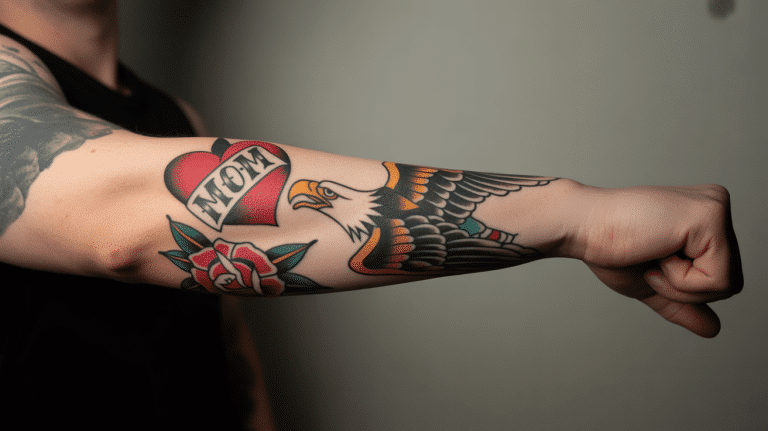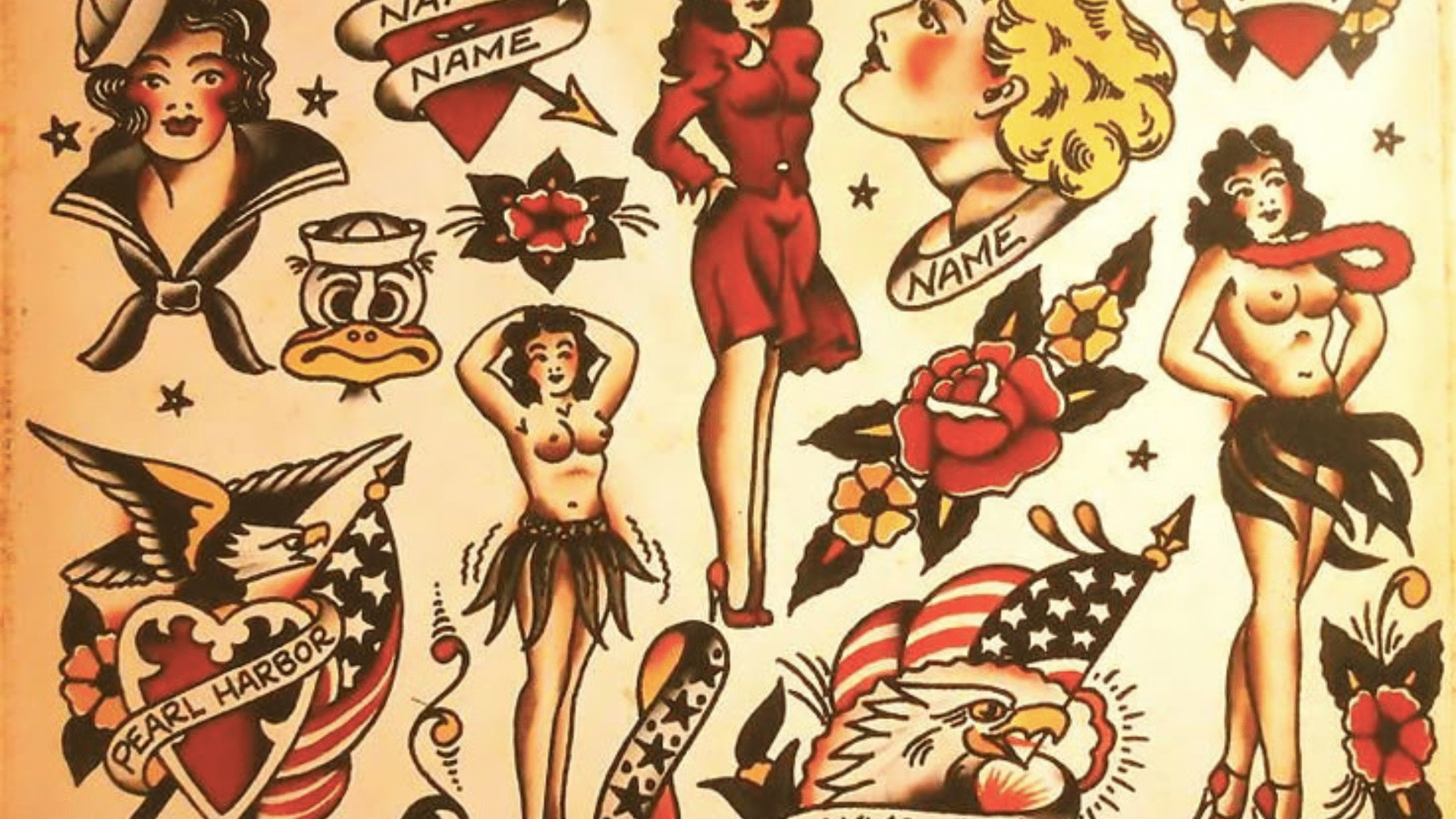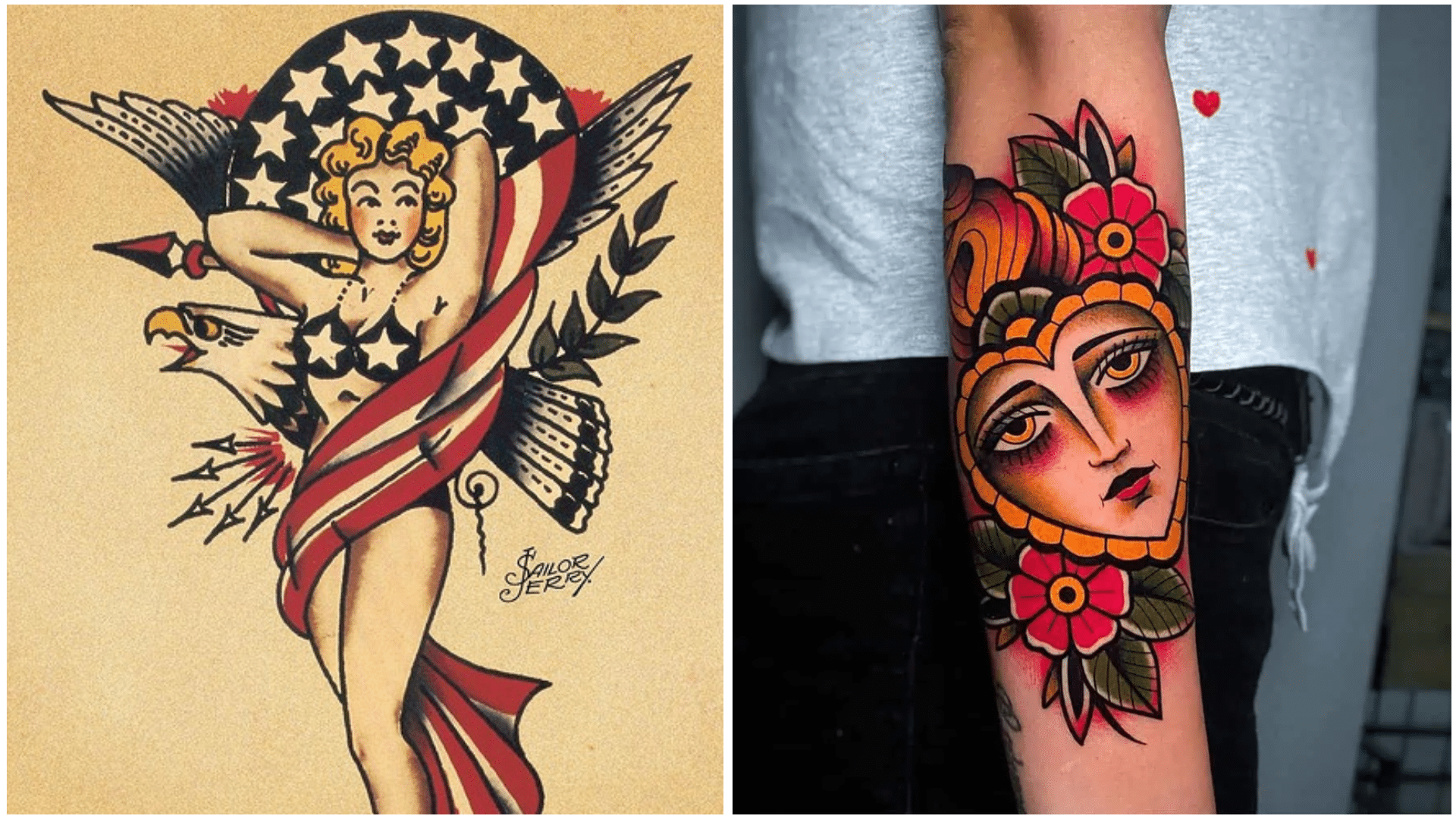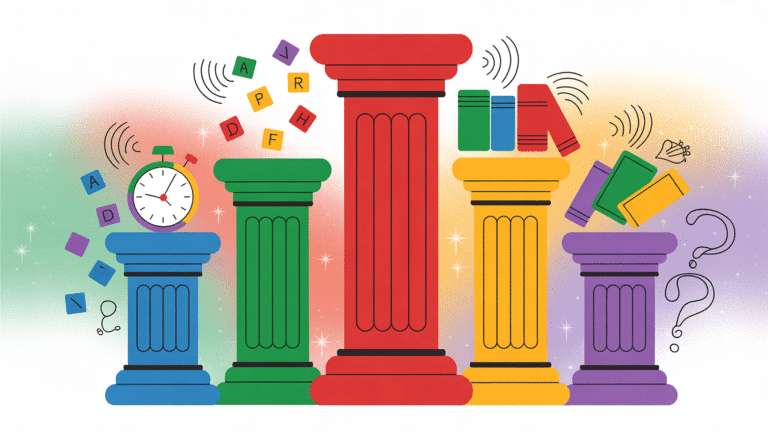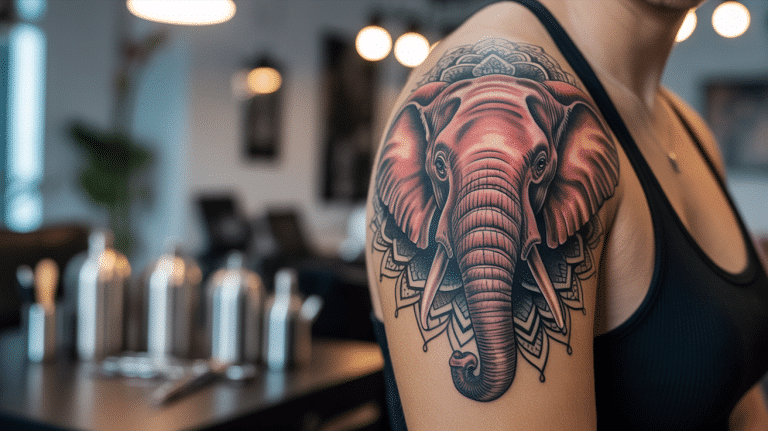Picture a weathered sailor stumbling into a dimly lit parlor in 1891 New York City, his arms covered in exotic tattoos from forbidden Pacific islands.
Martin Hildebrandt, America’s first professional tattoo artist, watches as living history walks through his door, each design telling tales of storms survived and loves left behind.
This moment sparked a cultural revolution that transformed simple ink into America’s most rebellious art form.
Bold black lines, vibrant colors, and timeless designs. American traditional tattoos originated from the gritty underworld of sailors and soldiers, emerging as iconic symbols of freedom and defiance.
These aren’t just tattoos; they’re battle scars of the American spirit, forged in maritime adventure and carried by generations of rebels.
Check out the untold origins, legendary artists like Sailor Jerry, and the cultural shifts that transformed these designs from society’s shadows into mainstream art, which continues to captivate hearts today.
What Makes American Traditional Tattoos Special
American traditional tattoos stand out through three distinctive characteristics that have remained unchanged for over a century. These tattoos feature bold black outlines that create strong, clear boundaries around each design element.
The color palette stays limited to primary colors: red, yellow, green, and blue, applied in solid, saturated blocks without gradation or complex shading techniques.
The style earned the nickname “Old School” because it represents one of America’s oldest continuous tattoo traditions. Unlike modern tattoo styles that embrace photorealism or intricate detail work, American traditional tattoos focus on simplicity and readability.
This approach ensures the designs remain clear and recognizable even as they age over decades. The visual impact comes from contrast rather than complexity.
Each design element serves a specific purpose, whether it’s the bold outline that defines the shape or the solid color fill that gives it life.
This minimalist approach creates tattoos that can be recognized instantly from across a room, making them perfect for conveying clear symbolic messages.
Origins of American Traditional Tattoos: Sailors and the Sea
In places like Polynesia and Japan, sailors who spent months at sea encountered tattoos that changed their lives.
Local people in these places had been getting tattoos for hundreds of years. The designs and techniques were far ahead of anything Americans had seen. Sailors learned from these masters and brought the knowledge back home.
By the time these sailors returned to American ports, they were covered in tattoos that told stories of their travels. Other sailors saw these tattoos and wanted their own. Soon, tattoo shops began to open near naval bases and ports.
The designs created by these early tattoo artists were inspired by sailor life. Anchors reminded them of their ships. Swallows meant they had traveled far from home.
These weren’t just decorations; they were badges of honor that showed where a sailor had been and what he had survived.
The Golden Years: Sailor Jerry Changes Everything
If there is one person who has shaped American traditional tattoos more than anyone else, it’s Norman “Sailor Jerry” Collins. Working in Honolulu from the 1930s to the 1970s, Sailor Jerry took the basic ideas of sailor tattoos and made them into high art.
Jerry was a perfectionist who built better machines and mixed his own colors. But he wasn’t working alone. Bert Grimm, working in California, was another master known for clean lines and bold colors who trained many artists.
Jerry’s biggest contribution was his flash art: the pre-drawn designs on tattoo shop walls.
He created hundreds of original designs and shared them with other artists, spreading consistent, high-quality American traditional tattoos nationwide.
World War II had a significant impact on tattoos. Millions of young soldiers got tattoos to mark their experience and show courage.
Jerry’s Honolulu shop was perfectly placed for military customers, and his bold designs became the standard for American traditional tattoos.
The Evolution of American Traditional Tattoos
For the first half of the 20th century, tattoos were primarily associated with sailors, soldiers, and individuals on the fringes of society.
This shift began in the 1960s and 1970s. The counterculture movement embraced tattoos as a form of rebellion against mainstream society. Bikers, rock musicians, and young people rejecting traditional values all started getting tattooed.
American traditional designs were perfect for this movement. The bold, rebellious imagery matched the attitude of people who wanted to stand out and make a statement.
By the 1980s and 90s, tattoos were becoming more accepted. Celebrities began to showcase their tattoos, and the general public started to view them as art rather than just symbols of rebellion.
Today, traditional American tattoos are popular among people of all kinds. The designs that once marked you as an outsider are now seen as classic American art.
Iconic American Traditional Tattoo Designs and Their Meanings
Certain images recur frequently in American traditional tattoo work, each carrying profound symbolic meaning that connects people to American history and culture. What makes these tattoos special isn’t just their appearance. It’s the stories and values they represent.
1. Eagles
Eagles rank as the most popular American traditional tattoo design. They represent freedom, strength, and patriotism, making them especially meaningful for veterans and those who value American ideals.
These patriotic symbols show love of country and respect for military service, connecting the wearer to national identity and pride.
2. Anchors
Anchors derive from sailor tradition and represent stability and staying grounded during difficult times. Many people choose anchors to remind themselves to remain strong when facing life’s challenges.
Like other nautical themes, anchors connect people to America’s maritime heritage, even those who have never been to sea.
3. Roses
Roses carry complex symbolic meanings despite their simple appearance. Red roses typically represent passionate love, while black roses can signify loss or remembrance.
These symbols of love reveal what matters most to people, whether celebrating new relationships or honoring departed loved ones.
4. Hearts
Hearts remain classic choices for good reason. Often featuring names written across them, usually “Mom” or a loved one’s name. These tattoos display what matters most to someone.
The classic “Mom” tattoo might seem old-fashioned, but it represents one of humanity’s strongest bonds between parent and child.
5. Swallows
Swallows hold special meaning in sailor culture. Tradition holds that swallows return to the same place every year, so sailors got swallow tattoos to help them find their way home.
Today, people choose swallows to represent loyalty and the hope of returning to what they love, making these birds symbols of faithfulness and homecoming.
6. Pin-up Girls
Pin-up girls gained popularity with World War II soldiers who wanted to carry reminders of the women back home.
These tattoos often depicted idealized women in vintage clothing and poses, representing both desire and the motivation to survive combat and return to loved ones.
7. Skulls and Daggers
Skulls and daggers represent life’s harder realities. They remind viewers that life is short and should be lived boldly. These designs often appeal to people who have faced danger or overcome significant challenges.
Rather than being morbid, these symbols of mortality often inspire people to live more fully and appreciate each day.
Getting Your Own American Traditional Tattoo
If you’re considering getting a traditional American tattoo, here’s my professional advice. First, choose a design that holds personal significance for you.
Don’t just pick something because it looks cool. Pick something that tells your story. Second, find an artist who specializes in American traditional work. This style requires specific skills and knowledge.
Review their portfolio and ensure their lines are bold and clean, and their colors are solid and bright.
Third, think about placement carefully. American traditional tattoos work best when they have enough space to show off their bold lines and simple shapes. Avoid cramming a complex design into a small space.
Finally, be prepared for proper aftercare. These tattoos heal best when you follow your artist’s instructions exactly.
Conclusion
American traditional tattoos represent far more than decorative body art. They embody living pieces of American cultural history that span over a century of artistic evolution and social change.
From brave sailors bringing exotic tattooing techniques home from distant Pacific islands to modern people marking important life moments with timeless symbols, these tattoos connect individuals to something larger than themselves.
The beauty of American traditional tattoos rests in their honest simplicity and remarkable durability.
These designs age gracefully alongside the people who wear them. They maintain their symbolic power and visual impact across decades of cultural change.
Drop a comment and tell us – which classic American traditional design is calling your name: eagle, anchor, or rose?

